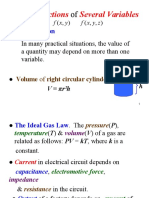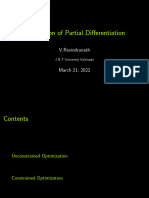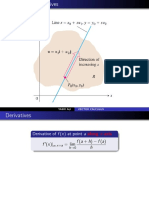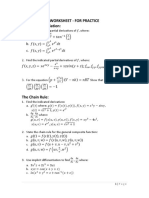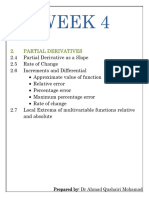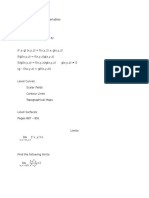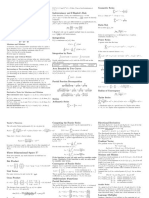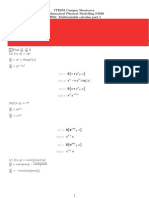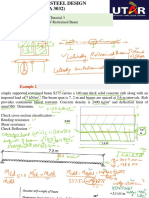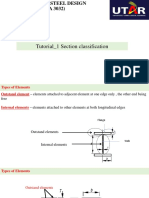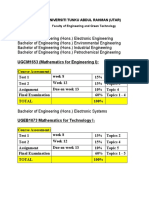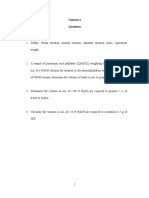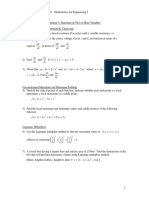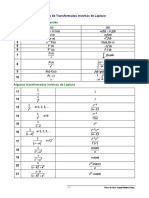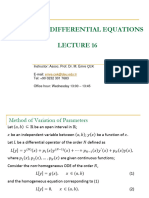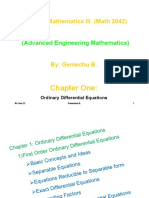0% found this document useful (0 votes)
96 views3 pagesTutorial 3
This document contains a mathematics tutorial on functions of two or more variables, including partial and implicit differentiation, unconstrained maximum and minimum problems, Lagrange multipliers, directional derivatives, and gradients. Some key problems are:
1) Finding an expression for dv/dt in terms of de/dt and dr/dt.
2) Finding partial derivatives of a function z with respect to x and y.
3) Finding partial derivatives of functions u and v with respect to x and y.
4) Finding critical points and determining if they are local maxima, minima or saddle points.
5) Finding local extrema and saddle points of a function f(x,y).
Uploaded by
木辛耳总Copyright
© © All Rights Reserved
We take content rights seriously. If you suspect this is your content, claim it here.
Available Formats
Download as PDF, TXT or read online on Scribd
0% found this document useful (0 votes)
96 views3 pagesTutorial 3
This document contains a mathematics tutorial on functions of two or more variables, including partial and implicit differentiation, unconstrained maximum and minimum problems, Lagrange multipliers, directional derivatives, and gradients. Some key problems are:
1) Finding an expression for dv/dt in terms of de/dt and dr/dt.
2) Finding partial derivatives of a function z with respect to x and y.
3) Finding partial derivatives of functions u and v with respect to x and y.
4) Finding critical points and determining if they are local maxima, minima or saddle points.
5) Finding local extrema and saddle points of a function f(x,y).
Uploaded by
木辛耳总Copyright
© © All Rights Reserved
We take content rights seriously. If you suspect this is your content, claim it here.
Available Formats
Download as PDF, TXT or read online on Scribd
/ 3




